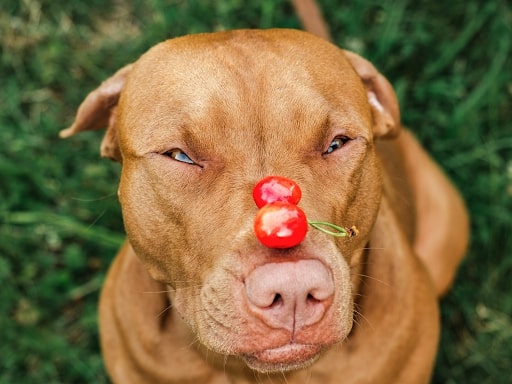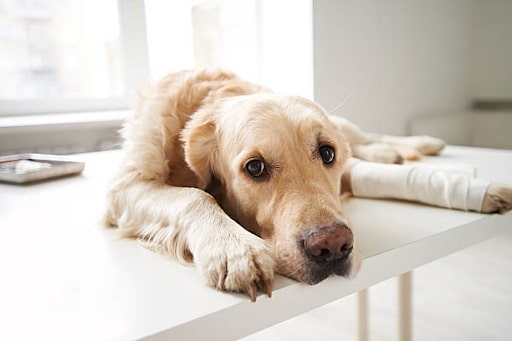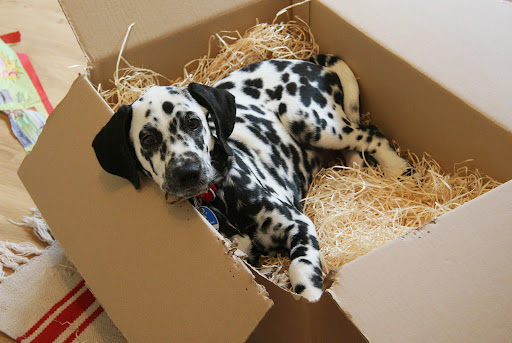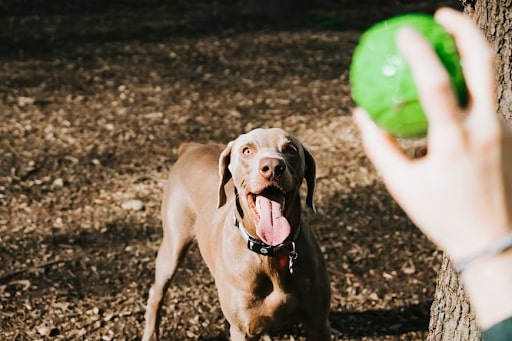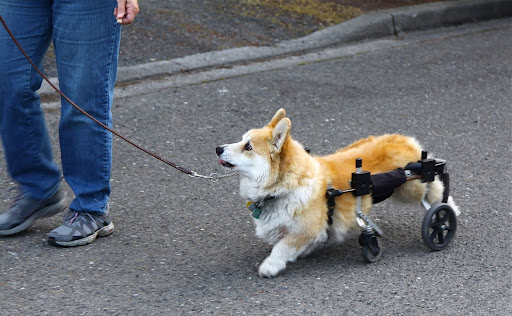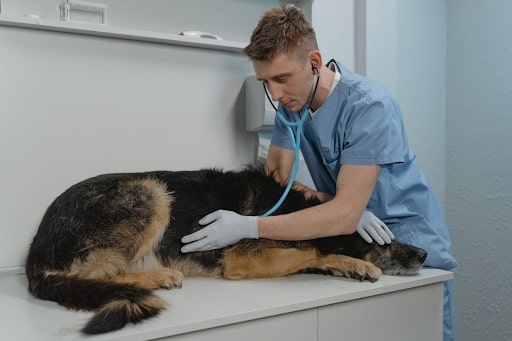Has your dog recently developed a pink or red polyp bulging from the corner of the eye? It happens when the ligaments in its third eyelid break down, causing the tear duct to swell. It needs treatment to prevent discomfort, dry eyes, infections, and vision impairment.
The average cost of cherry eye dog surgery is $300-1,500, though the overall cost can reach $2,500. The amount varies based on the severity of the condition, the dog’s age and size, pre-operative tests, the location of the surgery, etc. Post-op care can further increase the cost.
Irrespective of the expense, surgery is a must as it is the only way to fix this problem. A prolapsed gland doesn’t go away on its own. So keep reading to get an idea of the expenses you may have to bear for your fur baby.
Factors Affecting Cherry Eye Surgery Cost for Dogs

The current cost of cherry eye surgery depends on various factors, as mentioned below:
Severity of the Condition
If you see mild swelling and redness, it might be the early stage of cherry eye. The doctor may start with antibiotics or anti-inflammatory meds for infections or swellings.
If they don’t work or the polyp is too large, expert ophthalmologists will surgically reposition the prolapsed gland. Things get more complicated if both eyes are affected.
Size and Weight of the Dog
The dog’s size and weight affect the medication, anesthesia, and IV fluid therapy during the procedure. Your dog’s size will also affect the medication required after the surgery.
Larger and heavier dogs need more of these during and after the surgery. Accordingly, the final cost of the surgery and post-operational care will increase.
Age of the Dog
Senior dogs are prone to various health conditions and complications during surgery. So, senior dogs need more frequent monitoring and greater care.
The pre-operative and post-operative sessions may increase in the base of aged dogs, especially if they have pre-existing medical conditions. These will raise the overall cost.
Pre-operative Tests and Vaccines
Pre-op physical examinations are absolutely necessary. These identify any health issues, including some of the ignored conditions like cold, sneezing, fever, etc.
Your dog must also undergo pre-anesthetic blood tests to help determine whether it is the right candidate for the surgical treatment. A Rabies vaccine may also be needed.
Post-operative Care
After the surgery, your dog will need pain medication and antibiotics. These are essential for the speedy recovery from the procedure and the prevention of infections.
It may need medicines for possible complications during the surgery. You’ll also need to take your pet for frequent clinic follow-up visits and post-surgical tests.
Surgical Facility
The tests, surgery, and post-op care may occur in your locality’s general practice facility. Such clinics are usually quite affordable and save exorbitant expenses.
On the other hand, you may choose to get the treatment done by an experienced expert at a specialized vet care hospital with advanced facilities. It will be an expensive affair.
Geographical Location
If you live in a large metro city in one of the expensive states like Hawaii, New York, or California, expect to spend a fortune. The doctor’s fee is usually higher in these places.
Pre-op and post-op care, tests, medicines, etc., are costlier than in places like Mississippi, Kansas, Alabama, etc., with low living costs. Costs will also vary based on state taxes.
Related: How Much Does Cataract Surgery for a Dog Cost?
Cost of Cherry Eye Surgery for Dogs: What to Expect
Depending on the dog’s age and physical structure, the severity of the condition, location, etc., the cost of cherry eye surgery can range between $300 and $1,500. However, when you get the first quote, always ask for the breakdown to know what’s included.
In general, the base package includes the following:
- Surgeon’s fee
- Pre-operative examination
- Surgery itself
- Anesthesia and medication
- Post-surgical monitoring
- Aftercare in the hospital.
Initial quotes usually omit the following:
- Initial consultation
- Follow-up treatments and visits
- Pre-anesthetic blood test
- IV fluid during surgery
- Post-surgical medicines for home-care
- Treatment complications arising during/after surgery
You should also inquire about anesthetic medication and pre-anesthetic blood test costs.
Many pet owners have mentioned being charged around $600-$800 for the surgery. The experiences shared by some pet owners a few years ago suggest that the surgery cost was less than $250 per eye.
The post-surgery eye ointments cost $100-$500. Doctor visits were $35-85 at that time. But in recent years, the cost has increased significantly.
More recent experiences suggest that the overall cost can be around $2,000-2,500. Here’s a list of the approximate expenses based on Lhasa Apso owner Clint Cora’s experience in 2021, with figures rounded off –
| Initial Specialist Consult | $260 |
|---|---|
| Blood Tests | $170 |
| Surgery | $250 |
| Hospitalization | $70 |
| IV Catheter | $45 |
| IV Line | $30 |
| IV Fluids | $30 |
| Sedative | $30 |
| Anesthetic Induction | $140 |
| General Anesthesia | $530 |
| Anesthetic Maintenance | $60 |
| Microscope Fee | $85 |
| Pack Fee | $420 |
| Eye Protection Ointment for Surgery | $35 |
| Antibiotic Ointment | $25 |
| Immunosuppressive Oil for Dry Eyes | $60 |
| Pain Medication | $30 |
| Follow-Up Visit | $95 |
Based on the above, you can guess that the total cost can be around $2500. Remember the taxes on these base expenses, with rates differing from one state to another.
Related: How Much Does It Cost to Clean Dog Teeth?
Cherry Eye Surgery in Dogs: Procedure, Risks, and Recovery

Before you invest in your dog’s cherry eye surgery, here’s everything you need to know about the treatment.
How is Cherry Eye Surgery Performed?
Canines have three eyelids. And the third eyelid, i.e., the nictitating membrane, has ligaments to keep the tear duct in place.
If the ligaments break down, the tear duct pops out of its place. This causes a cherry-like formation that needs to be surgically fixed.
The gland may be tucked into the orbital rim and sutured. Or, the surgeon creates a pocket for the tear gland.
Earlier, doctors used to remove the prolapsed gland. But now, vet ophthalmologists take a different route. They perform surgery to reposition the gland.
Here’s a video that describes how the pocket method of surgery is performed.
Breeds with small snouts and short limbs, like Shih Tzus, Bulldogs, Pugs, etc., are more prone to this condition. But other breeds, like Beagles, Bloodhounds, Rottweilers, etc., also develop the cherry eye.
Why is Cherry Eye Surgery Required?
If the cherry eye is left untreated, the first problem will be your pet’s discomfort. Your pet can end up with scratched cornea or infections due to rubbing.
Plus, it may lead to dry eyes due to abnormal tear production, a painful condition requiring lifelong medication. Your dog can even develop corneal ulcers or face vision loss.
Risks and Complications Associated with Cherry Eye Surgery
Post-surgery, your dog may experience a few complications, like:
- Grogginess during the first 48 hours after surgery;
- Discomfort and overproduction of tears;
- Blood-like discharge from eyes and nose;
- Swelling or inflammation at the treatment site;
- Infection in the stitches;
- Insufficient tightening of tissue gaps, causing the reappearance of a cherry eye;
- Loose stitches due to inadequate hold, leading to injury.
Expected Recovery and Rehabilitation After Cherry Eye Surgery
After the surgery, your pet may take 10-14 days to heal completely. Here’s how you should take care of your furry friend during this period:
- It usually takes 24-48 hours for the effect of anesthesia to wear off. During this time, allow your dog to rest properly and limit their physical activities.
- Your dog may feel uncomfortable and try to paw and scratch the treated eye. You can prevent that with a cone collar which should be worn for 10-14 days.
- Infections can easily develop after the treatment. So ensure that the dog is in a clean place with no outdoor activities. Don’t bathe the animal during this time.
- Due to medicines and surgery, your dog’s discomfort may make it irritable. So keep it quiet and comfortable, away from other pets and children.
- Your doctor will prescribe oral and topical medicines like pain relievers, healing agents, antibiotics, etc. Administer these as directed. And don’t give OTC painkillers.
- Anesthesia can cause nausea, vomiting, and loss of appetite. Start normal feeding a day after the surgery when the appetite becomes normal.
- Give bland and simple food if your dog’s appetite takes longer to recover. Boiled rice and chicken are good options, but avoid milk.
- If your dog refuses to take oral medication like painkillers, you can put them in the food.
Related: Dog Insulin Cost
Ways to Lower Cherry Eye Dog Surgery Costs
If you want to reduce the cost of cherry eye surgery, it’s best not to compromise on the vet you consult. Instead, try the following:
Finding Low-Cost Clinics
Browse around for clinics providing good care and proper facilities without setting you back by hundreds of dollars. Local vet clinics are cheaper than specialized vet hospitals.
Exploring Pet Financing Options
You can opt for a pet loan, a type of personal loan for pet medical care. Not all banks, credit unions, or other lenders provide pet financing, and you need a good credit score.
Checking Pet Insurance Coverage and Care Credit
Pet care credit cards are great for making any upfront payment that may be required. Plus, pet insurance can help reimburse the amount invested in your pet’s health.
Discussing Treatment Options with the Veterinarian
Discuss thoroughly with your pet’s doctor to know what the treatment package includes. Also, find out if the package can be customized to reduce costs.
Related: Breaking Down the Dog Tooth Extraction Cost
Cherry Eye Surgery: A Small Price for Your Precious Pet’s Eyes

Various pre-operative and post-operative factors, along with your dog’s health, can contribute to the overall cost of cherry eye surgery. So talk to your vet about cost concerns and find a budget-friendly option.
Remember that whatever expenses you bear for the surgery will ultimately save your precious fur baby from pain. It can even prevent the risk of vision loss.

